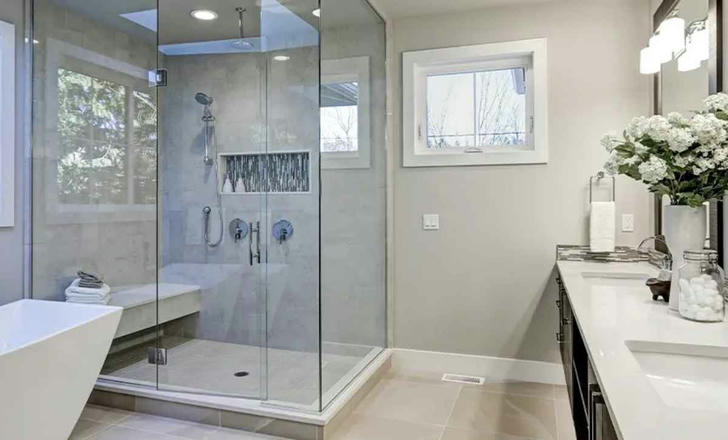🚿 Replace Bathtub with Walk-in Shower: A Smart Upgrade for Modern Bathrooms
Upgrading from a traditional bathtub to a walk-in shower has become a practical and desirable choice for many homeowners across the U.S. With improved accessibility, space efficiency, and contemporary design options, this transformation aligns with the evolving needs of modern living spaces.

✅ Why Replace a Bathtub with a Walk-in Shower?
🔹 Easier Access: Step-in designs are more convenient for individuals who prioritize safer and faster entry.
🔹 Space Optimization: Especially in smaller bathrooms, a walk-in shower can create the illusion of more room.
🔹 Modern Appearance: Frameless glass, large-format tiles, and minimalist fixtures contribute to a sleek, updated aesthetic.
🔹 Faster Maintenance: Showers are often easier to clean and maintain than tubs with multiple contours.
🔹 Increased Property Appeal: Bathroom renovations often influence resale value and buyer interest.
💰 Cost of Replacing a Bathtub with a Walk-in Shower
The total cost depends on location, materials, labor, and additional features like benches or rainfall heads. Here's a regional overview:
| Region | Average Cost (USD) |
|---|---|
| West Coast | $6,000–$10,000 |
| Northeast | $5,800–$9,500 |
| Midwest | $5,200–$8,700 |
| South (e.g., TX, FL) | $5,000–$8,000 |
💡 Cost includes removal of the old tub, installation of a standard walk-in shower, waterproofing, and basic tiling. Luxury upgrades may increase the final price.
⏱️ How Long Does It Take?
Most bathtub-to-shower conversions take 2 to 4 days, assuming standard installation. Customized builds or special tilework can extend the timeline to about a week.
🔎 Things to Consider Before Upgrading
• Permits: Some areas require local permits for plumbing modifications.
• Drainage: Existing tub drains may need adjustment to align with shower requirements.
• Waterproofing: Proper sealing is essential to avoid future moisture issues.
• Accessibility Features: Consider handheld showers, non-slip flooring, and seating.
💡 Financing and Support Options
| Program Name | Type of Support | Eligible Groups | Notes |
|---|---|---|---|
| Medicaid Home and Community-Based Services (HCBS) Waivers | Financial Assistance (State-Level) | Low-income individuals with qualifying medical needs | Some states cover home modifications under waiver programs. |
| Department of Veterans Affairs (VA) Grants | Grants for Home Modifications | Eligible veterans | Includes SAH, SHA, and HISA grants that may cover shower conversions. |
| USDA Rural Development Housing Repair Loans and Grants | Low-interest Loans or Grants | Rural low-income homeowners | May support bathroom safety upgrades, including shower installations. |
| Area Agencies on Aging (AAA) | Local-level Resources & Referrals | Adults needing aging-in-place adaptations | Varies by location; may assist with planning and funding access. |
| State Assistive Technology Programs | Equipment Loans or Grants | Individuals with disabilities | May help source walk-in shower equipment. |
| Non-Profit Housing Rehabilitation Programs | Varies: Discounts, Labor Support | Depends on nonprofit and location | Local organizations sometimes help with senior-friendly retrofits. |
⚠️ Availability varies by state and individual eligibility. Applicants are typically required to provide income or medical documentation to qualify for support.
🧰 Next Step: Planning Your Bathroom Upgrade
A walk-in shower conversion is more than just an aesthetic decision—it reflects changing lifestyle needs. For those planning a bathroom remodel, starting with layout evaluation and budget estimation is crucial. A consultation with a licensed contractor or design specialist can clarify feasible options based on space and structure.
FAQ: Walk-in Shower Conversion
Q: Do I need a permit to remove a bathtub?
A: In most cases, yes—especially if plumbing or structural work is involved. Local regulations vary.
Q: Is it more expensive to install tile or acrylic panels?
A: Tile tends to cost more due to labor, while acrylic panels are faster to install and lower in cost.
Q: Will removing a tub hurt resale value?
A: Not necessarily. In homes with multiple bathrooms, replacing one tub with a shower is often seen as a modern upgrade.
